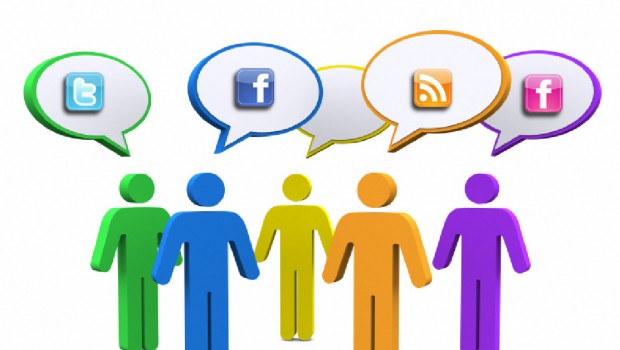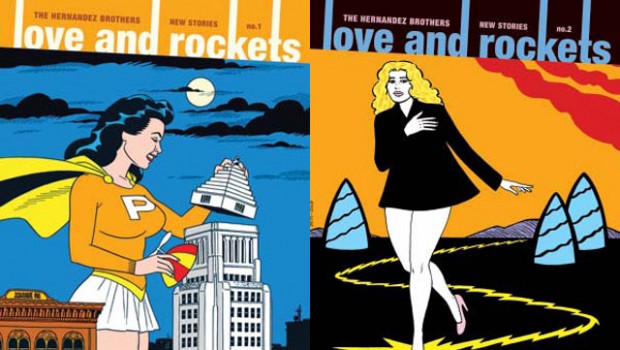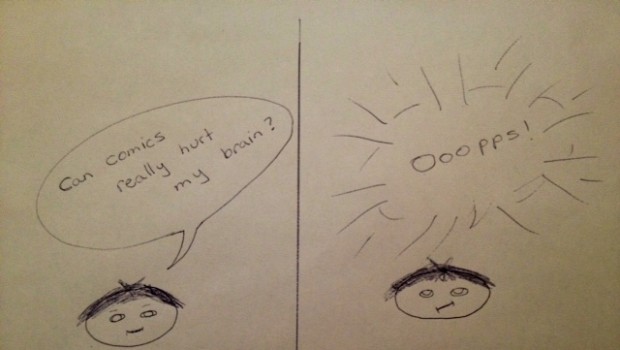Blogger, Facebook, Twitter: Illusory Egalitarianism
Igualitarismo ilusorio
Julian Baggini
Imagine that people have been talking about an exciting new kind of media. You decide to check it out for yourself. What you find dismays you. Most of it seems to be about the narrow concerns of hobbyists and special interest groups, celebrity gossip, dubious promises of self-improvement, or sex. Intellectual or creative merit is in short supply.
You might be tempted to dismiss it as a vacuous fad. But you would be wrong, because the “new media” I have described is actually magazine publishing. Indeed, similar things could be said about old media in general, not just television, but also books and newspapers. The problem is that, as Theodore Sturgeon said, 90% of everything is crap. With old media, however, we know what we like about it and we know what to ignore. With any new media, it takes time to sort the wheat from the chaff, and until that’s been done, it often looks as though it’s all chaff.
We’ve already been through this process with the internet. Not so long ago, it was intellectually respectable to dismiss the whole of the Web as an inane space where porn ruled and nothing of any real quality could be found. Now, that position would just seem ignorant. Sites like Arts and Letters Daily, TED Talks and those of the BBC provide quality content that only the snob could dismiss.
Will social networking sites, from blogs to microblogs, via facebook and myspace, follow the same trajectory? I’m not so sure. The most recent and popular of these—Facebook and Twitter—do something that no other media has done before, including what we can now call “traditional websites” and blogs. They combine elements of both telecommunications and media to form a genuinely new kind of technological interaction. They use instant communication tools to not just pass on messages, but to point to other packets of information which other can choose to follow up or ignore. For want of a better word, they create teletrails.
Much has been made of the convergence of mobile telephony and the Internet to explain the rise of teletrailing. But at its core is the evolution of a much simpler technology, which is nevertheless of the web’s most potent creations: the hyperlink.
Initially, hyperlinks were simply used as very handy cross referencing tools, or collected together to form listings and directories. So, hyperlinks existed either between chunks of substantive information, or from listings to such chunks. What then happened was that hyperlinks gradually started to become part of the content of the communication and not just a pointer to it. To begin with, this was quite modest and simply piggy-backed on other forms of communication. For example, it soon became easy to “send a link to a friend” if you came across something on the Web that you liked, or include links in blog posts.
A real qualitative change occurred when social networking invented a way to put hyperlinks even closer to the heart of communication, rather than as an add-on to it. Facebook and Twitter are quite different in many ways, but what they share is the way in which both combine a fast turnover of short, self-contained messages, many of which include options to get much more with one click. This is what gave birth to teletrailing. A Facebook or Twitter user is both providing a steady stream of basic communication about what they’re up to, while at the same time leaving a trail of signposts to the things they have been doing or which have attracted their interest. The use of the verb “follow” in twitter is thus apt. Every new technology is continuous with what it follows, so I am not of course suggesting that the elements of teletrailing have no precedent. What is new is the balance of these elements. Twitter and Facebook have tipped this balance in ways which make it true to describe them as new ways of combining media and telecoms.
It is very diffi cult at this stage to guess what the consequences of this innovation will be. People have been notoriously bad at predicting how technologies will develop, and behaviors with them. People worry too much about obvious potential harms and miss more subtle effects. One of these could be how social networking fosters a kind of illusory egalitarianism that has always infected the Web. The Web is supposed to be a great leveller: anyone can blog or twitter, and Facebook friendships are reciprocal. But this equality is entirely superficial. In reality, most blogs are read by very few people while a small minority have huge followings. Similarly, for all the reciprocity of Facebook, there can be competition to get the largest number of friends. As for Twitter, the most popular could not possibly follow as many people as follow them. Social networking thus creates an illusion of equality which it does not even embody itself. This bolsters a broader cultural trend to deny that people differ in their abilities, by nature or by nurture. It’s pernicious because even though the external barriers to creative achievement are lowering all the time, if anything, the gap between those who succeed and those who don’t is getting even wider. Anyone can self-publish a book, for example, but making your living from writing is harder than ever, and very few authors each year break into the elite group of best-sellers (many of whom are celebrities anyway).
The most popular lament about new media is of course how it shortens attention spans and with it the shrinking of the amount of detail and information people are prepared to grapple with. Teletrailing seems to reduce the object of focus almost to vanishing point. The extent and rapidity of this change can be seen by how, already, blogs are looking quite earnest and old-fashioned. When blogs first appeared, they were compared unfavorably with newspaper and magazine articles. They tended to be shorter, were written more quickly, were light on research and heavy on opinion. But to those growing up on Facebook and Twitter, they must seem ponderously slow and long. For those who value thoughtful, crafted writing, this is a worrying development. However, paradoxically, microblogging might actually help longer, more thoughtful writing. The ever-shortening nature of social networking communications could help revive ‘proper writing’ by re-opening the gap between off-the-cuff jottings and thoughtful prose which blogging temporarily blurred.
This could easily occur as a result of a kind of Darwinian struggle. Those teletrailers who manage to be interesting and pithy in short tweets and messages could attract followers away from those who take 400-word blogs to make their point. Natural selection could result in the survival of the briefest. But, as we’ve seen, the distinctive feature of teletrailing is that it provides a constant streams of hyperlinks to more substantive material. Since people are going to receive many such links a day, there will be another evolutionary struggle, from which a few victors will emerge.
There is certainly no good reason to take the pessimistic view that people will lose all interest in anything requiring more than a few minutes to read. Think, for example, about how in the age of the supposed limited attention span, American television has been producing high-quality, long-running TV series which depend on viewers staying with the programmes for weeks on end. The mistake we tend to make is to imagine that the dominant trend will continue to develop in a linear fashion until everything conforms to it. What tends to happen is that trends generate countertrends. Just as much light leads people to seek the shade, so many swept along the relentless flow of nanonuggets of information fi nd they want to drop anchor every now again for less hurried contemplation.
A greater danger of the rise of teletrailing is, I believe, to the writers and artists who seem to have most to gain from it. The possibility of cashing in on social networks is potentially making many more people commodify themselves. Authors for example, are encouraged by publishers and agents to think about themselves as “brands”, and to blog, twitter, make friends on Facebook and so on. They are not alone: bands, artists, even therapists are turning into their own mini-PR departments, increasingly concerned not just with what they do, but how they can sell it to as many people as possible. High profile but actually quite rare tales of great success encourage creative to go along with this.
I would be a liar if I said I was not caught up in this trend. I would say I have more instrumental reasons for using Facebook than I do other ones, and while I see my twittering is a fun, creative challenge, I’m not sure I would have even started doing it I hadn’t thought that it might be good for my profile. Anecdotal evidence suggests that if I am unusual, it is only in my candour. The problem is that being high-minded and opting out looks like a luxury few can afford. Being active on social networking sites may be far from sufficient for success, but it looks increasingly as though it is necessary. People have long feared that it is only a matter of time before the creative dynamo that is capitalism finds a way of turning the freedom of the web to its advantage. It may yet do so, not by big business taking over, but by the logic of market economics coming to govern the decisions of individual teletrailers, infecting minds like virtual nanobots. Microblogging could thus turn out to herald the age of the microcommodification of society.
Julian Baggini is the co-founder and editor of The Philosophers’ Magazine. He is the author of The Duck That Won the Lottery: And 99 Other Bad Arguments (2009), The Pig that Wants to be Eaten and 99 other thought experiments (2005), Making Sense: Philosophy Behind the Headlines (2002) among many others. In addition, Baggini contributes to The Guardian, The Independent, The Observer and the BBC.
Imagina que la gente ha estado hablando de un nuevo y emocionante medio de comunicación. Decides corroborarlo por ti mismo y lo que encuentras te deja consternado. Parece que casi todo se relaciona con asuntos nimios de grupos de aficionados o con intereses particulares, chismes de celebridades, promesas dudosas de superación personal, o sexo. El intelecto o el mérito creativo escasean.
Puede que estés tentado a descartarlo y verlo como una moda banal. Pero estarías equivocado porque “el nuevo medio de comunicación” que he descrito es, en realidad, la publicación de revistas. De hecho, se puede decir cosas semejantes de los antiguos medios de comunicación en general, no sólo de la televisión, también de los libros y los periódicos.
El problema, tal como dijo Theodore Sturgeon, es que el 90% de todo es basura. Sin embargo, con los antiguos medios de comunicación ya sabemos qué nos gusta y qué ignorar. Con cualquier medio de comunicación nuevo toma tiempo separar el grano de la paja, y hasta que eso sucede, a menudo parece que todo es paja.
Ya hemos pasado por ese proceso con la Internet. No hace mucho tiempo era intelectualmente respetable rechazar la red en su totalidad y considerarla como un espacio inútil donde reina la pornografía y donde no podía encontrarse algo de buena calidad. Ahora esa postura simplemente se vería como ignorante. Sitios como Arts and Letters Daily, TED Habla y los de la BBC ofrecen contenidos de calidad que sólo los esnobs podrían rechazar.
¿Acaso los sitios de redes sociales, desde los blogs hasta los microblogs, via facebook y myspace, siguen la misma dirección? No estoy tan seguro. Los más populares y recientes de éstos —facebook y twitter— hacen algo que ningún otro medio de comunicación había hecho, incluyendo los que ahora podemos llamar “sitios web tradicionales” y blogs. Combinan elementos de las telecomunicaciones y de los medios de difusión para crear una nueva y genuina forma de interacción tecnológica. Utilizan herramientas instantáneas de comunicación no sólo para enviar mensajes, sino para señalar otros paquetes de información que otros pueden seguir o ignorar. En busca de una mejor palabra, crean telerastros.
Se ha hecho mucho en la convergencia de la telefonía celular y la Internet para explicar el surgimiento del telerastreo. Sin embargo, en sus principios básicos, es la evolución de una tecnología mucho más simple. La cual, no obstante, es una de las creaciones más potentes de la red: un hipervínculo.
Al principio, los hipervínculos eran utilizados simplemente como herramientas muy útiles de referencia o bien, eran recopilados para formar listas y directorios. Por lo tanto, los hipervínculos existían entre bloques de información importante, o provenían de los listados de esos bloques. Lo que sucedió fue que dichos hipervínculos comenzaron gradualmente a formar parte del contenido de la comunicación, y no sólo a ser un indicador de la misma. En sus inicios eran algo muy modesto y simplemente venían al final de otras formas de comunicación. Por ejemplo, muy pronto se hizo fácil “enviar un vínculo a un amigo” si encontrabas algo en la red que te gustara, o colocar vínculos en los espacios de los blogs.
Un verdadero cambio ocurrió cuando las redes sociales inventaron una forma de colocar hipervínculos más cercanos al corazón de la comunicación, más que como un simple accesorio. Facebook y Twitter son muy diferentes, pero se parecen en que ambos combinan una rápida rotación de mensajes breves e independientes, muchos de los cuales contienen opciones para conseguir más con sólo un clic.
Esto fue lo que dio surgimiento al telerastreo. Los usuarios de Facebook o Twitter proporcionan una corriente fija de comunicación básica sobre lo que están haciendo, al mismo tiempo que dejan un rastro de señales de sus actividades más recientes o que han llamado su interés. El uso del verbo “seguir” en Twitter es, por lo tanto, acertado.
Cada nueva tecnología es continuación de lo que le sigue, por lo cual no estoy diciendo que los elementos del telerastreo no tengan precedentes. Lo que es nuevo es el equilibrio entre estos elementos. Twitter y Facebook han establecido este equilibrio de una manera tal que es correcto describirlos como nuevas formas de combinar medios de comunicación con telecomunicaciones.
En esta etapa resulta muy difícil imaginar cuáles serán las consecuencias de esta innovación. Las personas se han equivocado notoriamente al predecir cómo se desarrollarán las tecnologías y las conductas que éstas conllevan. La gente se preocupa mucho sobre daños potenciales obvios y se olvida de efectos más sutiles. Uno de éstos podría ser cómo las redes sociales fomentan un tipo de igualitarismo ilusorio que siempre ha infectado la red. Se supone que la red debe ser una gran palanca: todos pueden usar los blogs y Twitter, y los amigos en Facebook son recíprocos. Pero esta igualdad es completamente superficial. En realidad, casi todos los blogs son leídos por muy poca gente mientras que una pequeña minoría tiene grandes seguidores. Del mismo modo, a pesar de la reciprocidad de Facebook, puede darse una competencia entre los usuarios por conseguir el mayor número de amigos. En lo que respecta a Twitter, los más populares no podrían seguir a tantas personas como las que los siguen a ellos. Por lo tanto, las redes sociales crean una igualdad ilusoria que ni siquiera adquiere forma.
Esto reafirma una tendencia cultural mayor para negar que la gente difiere en sus habilidades, por naturaleza o educación. Es pernicioso porque aunque las barreras externas a los logros creativos están disminuyendo todo el tiempo, si acaso, la brecha entre aquellos que tienen éxito y los que no, se está haciendo más grande. Cualquiera puede publicarse un libro, por ejemplo, pero vivir de la escritura es más difícil que nunca, y cada año muy pocos escritores pueden irrumpir en el grupo de élite de los best-sellers (muchos de los cuales ya son celebridades de todos modos).
Lo más lamentable de los nuevos medios de comunicación es sin duda cómo acortan los periodos de atención y con ello disminuye la cantidad de detalle e información que la gente está preparada para manejar. El telerastreo parece reducir el objeto de atención casi hasta el punto de hacerlo desaparecer.
La extensión y rapidez de este cambio puede verse en cómo los blogs ya parecen bastante serios y antiguos. Cuando los blogs aparecieron por primera vez fueron comparados desfavorablemente con artículos de periódicos y revistas. Tendían a ser cortos, escritos con mucha rapidez, eran pobres en investigación y duros de opinión, pero para aquellos que crecieron viendo Facebok y Twitter debió parecer lento y largo en demasía. Para quienes valoran la escritura pensada y elaborada esto resulta en un preocupante desarrollo.
Sin embargo, paradójicamente, el microblogeo podría ayudar a alcanzar una escritura más pensada y extensa. La naturaleza cada vez más acotada de las comunicaciones de redes sociales podrían ayudar a revivir la “escritura genuina” reabriendo la brecha entre las notas improvisadas y la prosa pensante, la cual había sido temporalmente obliterada en los blogs.
Esto podría ocurrir fácilmente como resultado de un tipo de lucha darwiniana. Los telerastreadores que se las ingenian para ser interesantes y concisos en breves cotorreos y mensajes pueden atraer más seguidores que aquellos que escriben 400 palabras en los blogs para expresar una idea. La selección natural podría resultar en la supervivencia del más breve, pero, como hemos visto, la característica distintiva del telerastreo es que provee un flujo constante de hipervínculos que conducen a material más sustancial. Dado que muchas personas recibirán varios vínculos de este tipo al día, habrá otra lucha evolutiva, de la cual surgirán pocos vencedores.
Sin duda, no hay una buena razón para ser pesimistas y pensar que la gente perderá todo interés en cualquier cosa que le tome algunos minutos para leer. Piense, por ejemplo, cómo en la era de los supuestos periodos de atención limitada, la televisión norteamericana ha estado produciendo series televisivas de alta calidad y que duran mucho tiempo en pantalla, las cuales dependen de espectadores que observen los programas durante semanas sin parar.
El error que tendemos a cometer es imaginar que la tendencia dominante continuará desarrollándose de una manera lineal hasta que todo se ajuste a ella. Lo que suele pasar es que las tendencias generan contra-tendencias. Así como mucha luz lleva a la gente a buscar sombra, muchas personas que recorren el flujo incesante de la nano-información valiosa descubren que quieren echar anclas de vez en cuando para obtener una contemplación menos apresurada.
Me parece que un peligro mayor en el incremento del telerastreo es para los escritores y artistas, quienes parecen ser los que más pueden ganar en ello. La posibilidad de cobrar en las redes sociales está potencialmente haciendo que muchas personas busquen su propia cosificación. Los escritores, por ejemplo, son alentados por los editores y agentes a pensar en ellos mismos como “marcas”, y usar los blogs y Twitter para hacer amigos en Facebook y demás. No están solos: las bandas, artistas e incluso los terapeutas se están convirtiendo en sus propios mini departamentos de relaciones públicas, cada vez más preocupados no sólo en lo que hacen, sino en cómo pueden venderse a cuanta gente sea posible. En realidad son muy pocas y raras las historias de grandes éxitos que alientan a las personas creativas a continuar con esto.
Mentiría si dijera que esta moda no me atrapó. Diría que tengo razones mucho más importantes para usar Facebook que otras redes, y mientras considero que mi cotorreo en twitter es un reto divertido y creativo, no estoy seguro de que lo hubiese comenzado si no hubiera creído que podía ser bueno para mi perfil. La evidencia anecdótica indica que si soy poco común es sólo por mi inocencia. El problema es que ser honorable y desentendido es un lujo que pocos pueden permitirse. Estar activos en sitios de redes sociales puede estar muy lejos de ser suficiente para tener éxito, pero parece cada vez más algo necesario.
Desde hace tiempo la gente tiene miedo de que sea sólo cosa de tiempo, antes que el dinamo creativo del capitalismo encuentre una forma de volver la libertad de la red en su propio beneficio. Puede ser que así sea, no porque grandes corporaciones tomen el poder, sino porque la lógica de la economía de mercado gobierne las decisiones de los telerastreadores individuales, infectando mentes como nanorobots virtuales. Por lo tanto, el microblogeo podría ser el heraldo de la era de la micro-cosificación de la sociedad.
Traducido por Anahí Ramírez Alfaro










